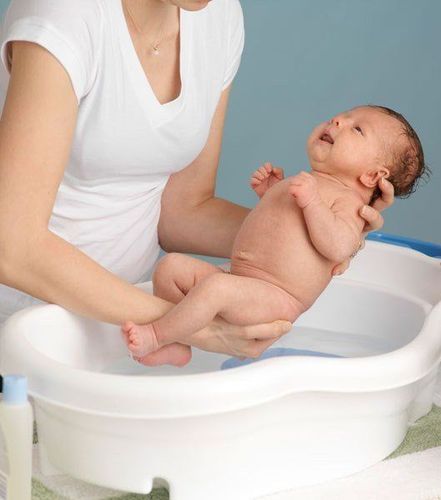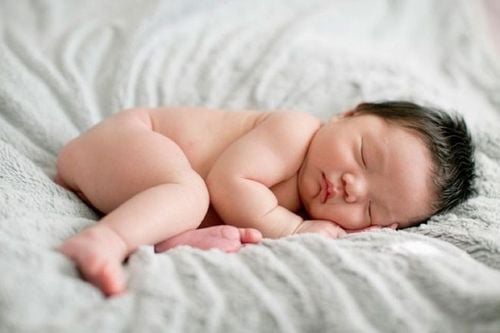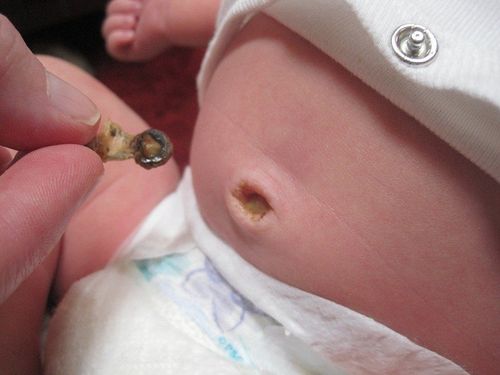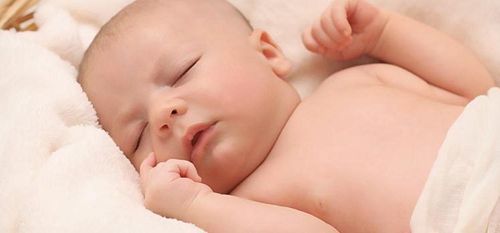This is an automatically translated article.
Having a baby is the happiest thing and gives parents a lot of changes. No matter how carefully you prepare, you will still find the skin of a newborn baby wrinkled, strange and very funny.1. Newborn's head
An infant's head may look slightly distorted or pointed. This happens when the baby goes through a lengthy birthing process. Your baby's head should return to its original shape after a week or two.
Babies born by cesarean section do not have the pressure to pass through due to the birthing process, so they have an advantage in terms of physical appearance. The baby's head becomes nice and round because, the baby's face doesn't swell as much as the baby born vaginally.
The soft skin on the baby's head is called the infant's fontanelle or the cephalothorax. These are triangular slits in the skull covered by a thick layer of skin. The fontanelle is divided into two parts, one in the front and one in the back - allowing the baby's skull to be compressed during birth, and after birth, allowing the brain to develop rapidly.
The posterior fontanelle takes about six months to close. The anterior fontanel takes 12 to 24 months to close.
Newborn baby's scalp often appears red and flaky buffalo dung. It usually goes away in a few weeks or months and rarely causes discomfort or itching. If you notice buffalo poop on your baby's head, try washing her hair more often with baby shampoo and using a soft-bristled brush. Herbal shampoos should not be used without consulting your baby's doctor as they can irritate your baby's delicate and tender skin.

Các điểm da mềm trên đầu trẻ được gọi là thóp của trẻ sơ sinh hay còn được gọi là cửa đình đầu
2. Babies' hands and feet
After spending so much time curled up in the tight spaces of your uterus, your baby needs time to adjust and stretch out. Your baby's arms and legs will pull out in a week or two. As she begins to stretch, she will appear a little limp until she begins to walk.
Some babies like to be swaddled - snugly wrapped in a blanket - because it's similar to when babies were in the womb.
3. Baby's belly Babies may lose some weight in the first week, but they'll return to their original weight in the second week and continue to gain weight in the following months.
After ten to 21 days, the baby's umbilical cord falls off, leaving a lovely little belly button. Some babies have dry umbilical cord stumps, others may have some blood-tinged discharge. Keep it dry and clean it with a cotton swab dipped in some rubbing alcohol, and it will heal on its own. If the umbilical cord hasn't fallen off after 1 month, talk to your baby's doctor.
Abnormalities in newborns after umbilical cord shedding
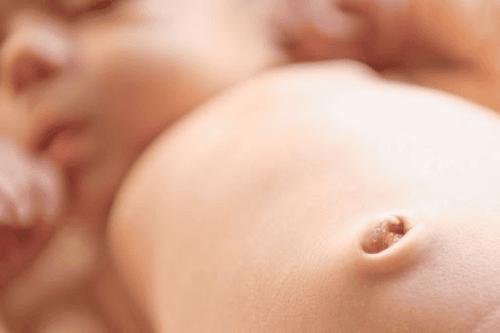
Một số trẻ sơ sinh có vết rụng rốn khô, một số khác có thể tiết ra một ít dịch nhuốm máu
4. Genitals and breasts The genitals and breasts of newborn boys and girls are often swollen. This is caused by the dose of hormone supplements just before giving birth. A little milky substance may even leak from your baby's nipples. Do not try to squeeze out this liquid - it is harmless and will dry on its own. Girls may have some white discharge or bloody vaginal mucus. All of this should go away within the first few weeks.
5. Newborn Skin Newborn skin changes depending on the time of birth. Premature babies have thin, almost transparent skin and are covered with body hair. You'll also see a milky substance, which protects the baby's delicate skin from the amniotic fluid. Babies born at full term, will appear less hair and white wax on the baby's body.
All the children in this world are born with purple-red skin that turns pinkish-red for a day or so. The pink color is because the blood vessels are visible through the baby's still thin skin. Because your baby's blood circulation is still in the process of maturation, his or her hands and feet may be slightly blue for a few days. Over the next six months, the baby's skin color will be well defined.
If your baby's skin is pale yellow in the first few days of life, he may have mild jaundice. More than half of healthy babies show signs of jaundice, which occurs when the body breaks down extra red blood cells. Jaundice usually goes away in a week or so for full-term babies. Usually nothing serious, but if the condition persists you should consult your doctor.
Jaundice that doesn't go away can be a sign of a metabolic disorder or liver problems. Your doctor may ask you to do a simple blood or skin test to determine if your baby needs treatment. In addition, the doctor will perform phototherapy for jaundiced children.
About 40% of babies have millet disease, which are small white or yellow spots on the face that look like small pimples. They usually go away without treatment after about 3 to 4 weeks.

Nếu da của trẻ sơ sinh có màu vàng nhạt trong vài ngày đầu đời, bé có thể bị vàng da nhẹ
If your baby develops small, pus-filled bumps that leave dark brown marks when they break open, it could be a rash. This neonatal rash is more common in African-American infants. There is no need to treat this condition. The signs should disappear by the time your baby is 3 or 4 months old.
Acne is not unusual in babies. About 1% of babies develop acne during the first month, a result of maternal hormones circulating in the baby's body after birth. Newborn acne can appear on a baby's forehead and cheeks. It can get worse if your baby lies on a rug that has been washed with strong detergents or is spit on. Place a clean, soft blanket under your baby's head when he wakes up, and gently wash his face once a day with baby soap to remove bleach or milk residue. Acne normally goes away on its own within a few months after the excess hormones are gone.
Spotty birthmarks (flat patches of skin that look like ink stains) are also common. They come in different shapes, sizes, and colors and can appear anywhere on a baby's body. Some types of birthmarks may not appear for several days or weeks after birth. Most birthmarks are harmless. Many birthmarks will disappear on their own within the first few years of life, however, others will stay with you forever.
6. Baby's hair
African-American babies are usually born with straight black hair, white couples can have children with red or fiery blonde hair. That said, newborn hair doesn't tend to have much of an effect on what your baby's hair will later look like. Even if your baby is born with thick hair, he or she may experience hair loss during the first few weeks or months.
Don't worry - the hair will grow back, although an infant's hair may return to a completely different color. The texture of a baby's hair often changes during the first six months. For instance, you might find thicker, sturdier hair growing out in place of your baby's soft, fine, curls.
7. Newborn's Eyes Many African-American, Asian, and Hispanic babies are born with gray-brown eyes and no noticeable color change, however some babies do. has chestnut brown eyes that become darker by the age of 6 months. Most Caucasian babies are born with dark blue eyes, and it can take months or years for a child's exact permanent eye color to become known. Usually, the eye color you see at 6 to 9 months is the surrounding eye color.
Some babies have red spots on the whites of their eyes. You don't need to worry too much, this is just a harmless side effect of birth trauma. It's called a subdural haemorrhage and should go away in a few days.
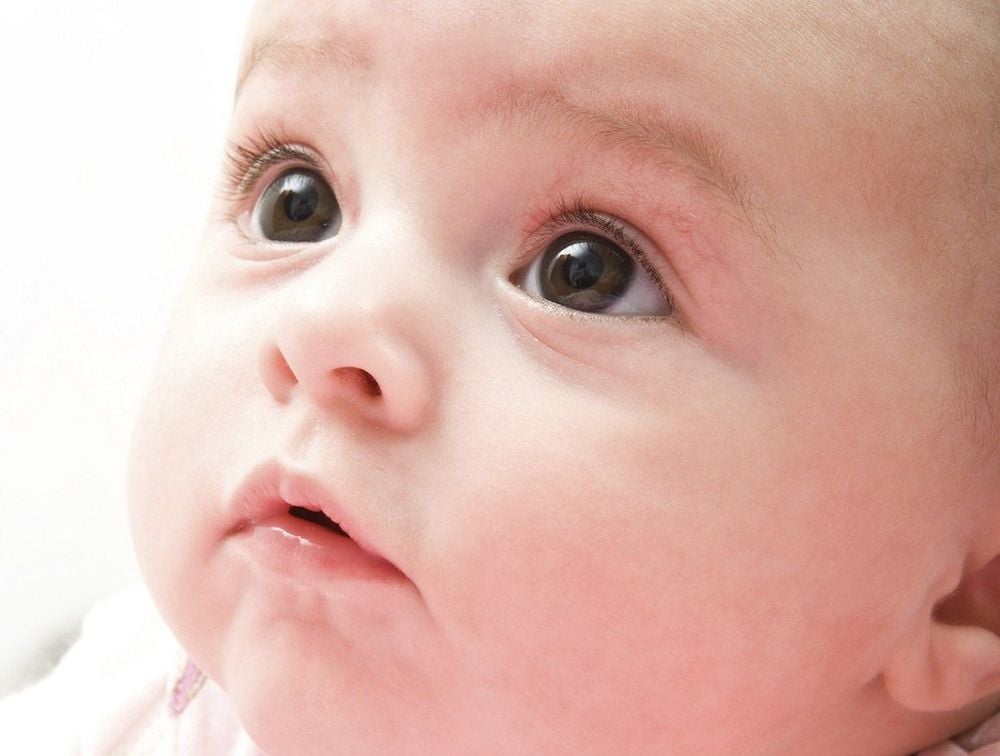
Phần lớn những đứa trẻ da trắng được sinh ra với đôi mắt màu xanh đậm
8. Newborn's Ears Baby's ears are soft, and one of the ear edges may be slightly bent. As the cartilage in the baby's ear becomes stiffer, the ear will return to its normal shape.
9. Newborn's Nose Newborn's nose can swell due to pressure during birth. A baby's appearance and behavior will change quite a bit during the first year of life.
Pediatrics department at Vinmec International General Hospital is the address for receiving and examining diseases that infants and young children are susceptible to: viral fever, bacterial fever, otitis media, pneumonia in children, ... With modern equipment, sterile space, minimizing the impact as well as the risk of disease spread. Along with that is the dedication from the doctors with professional experience with pediatric patients, making the examination no longer a concern of the parents.
Please dial HOTLINE for more information or register for an appointment HERE. Download MyVinmec app to make appointments faster and to manage your bookings easily.
Reference source: babycenter.com
SEE MORE
Baby's development in the first 1 month after birth 2 week old newborn: How to care and note A complete guide to newborn care




